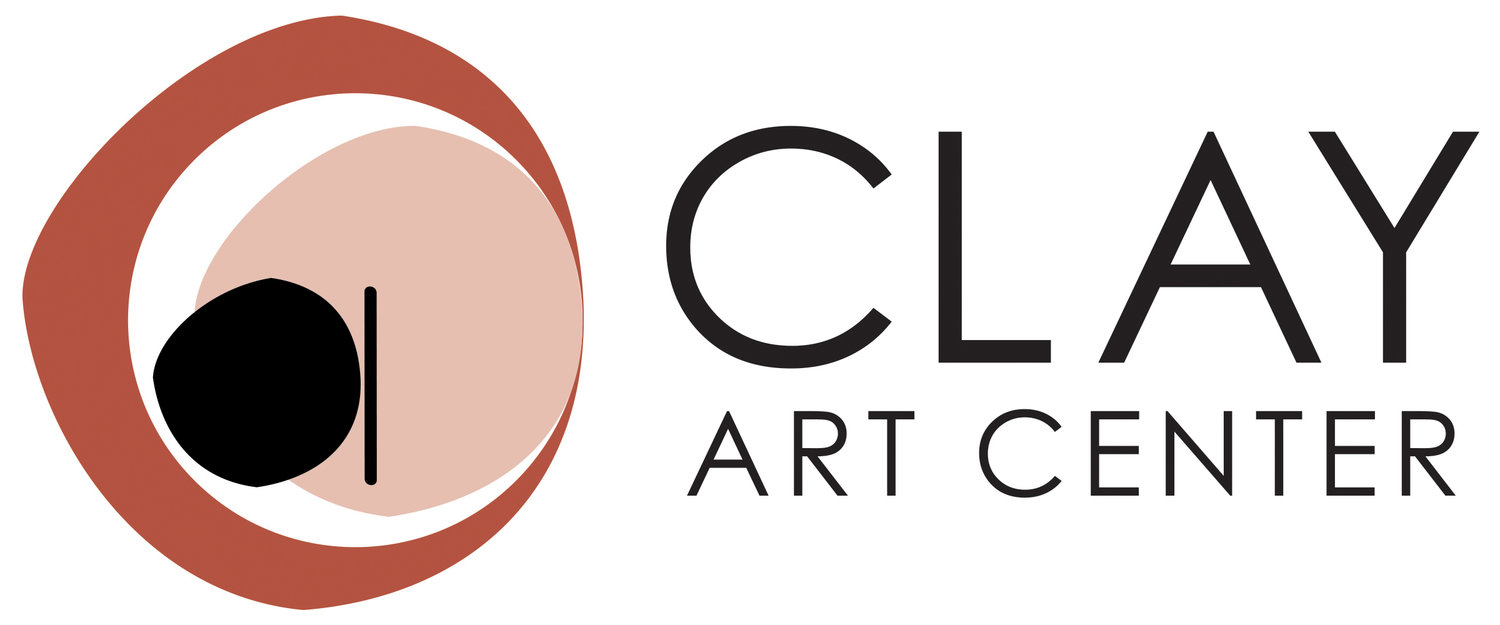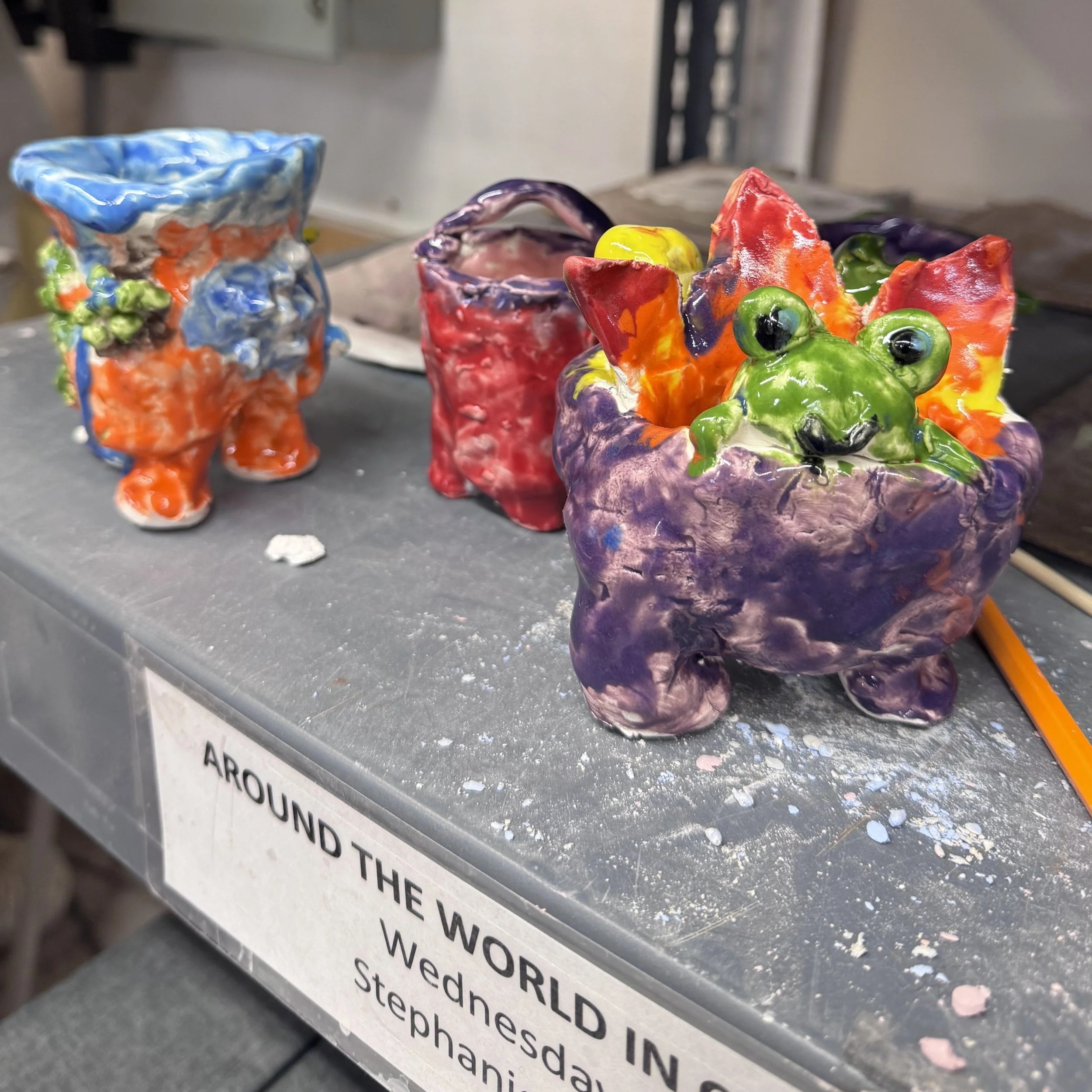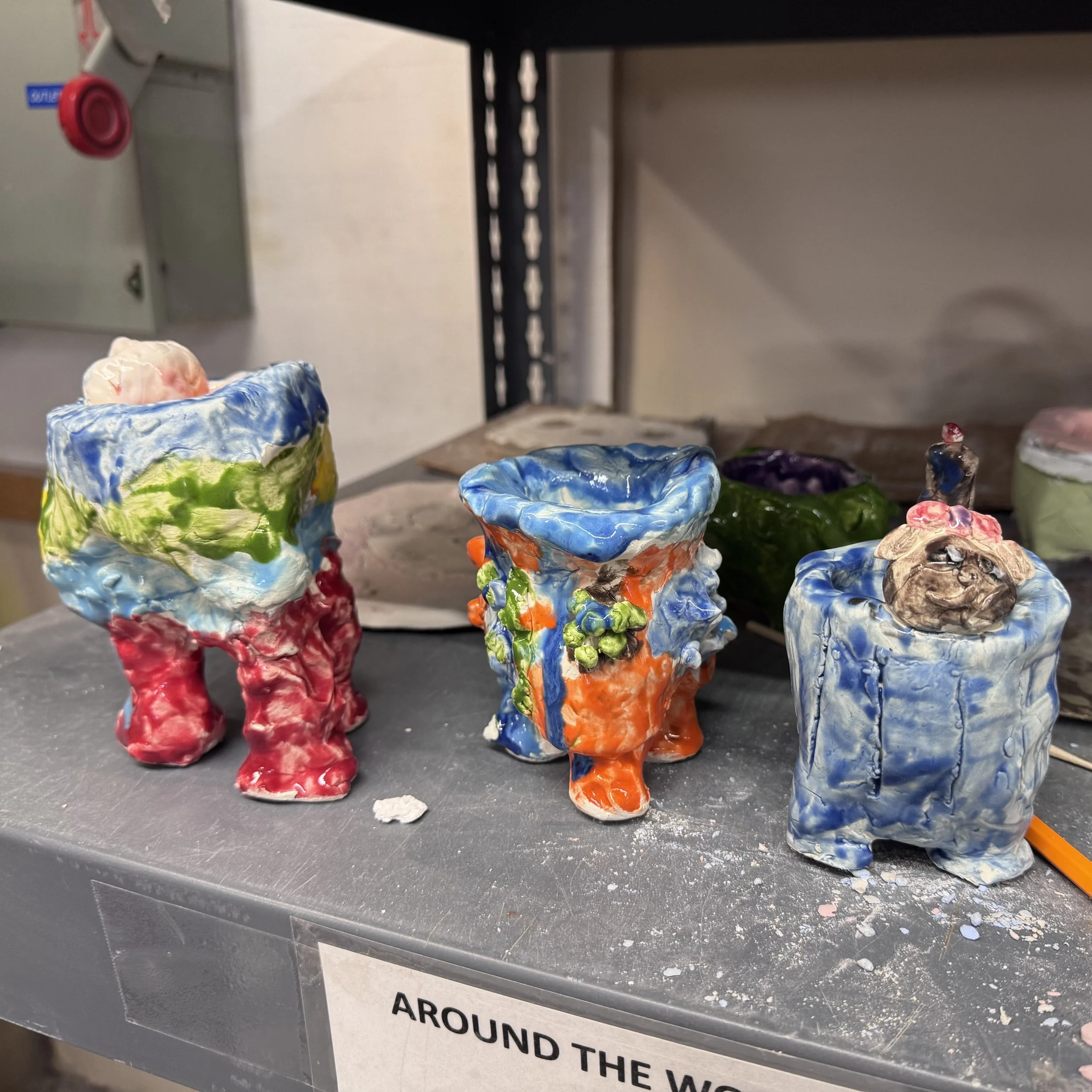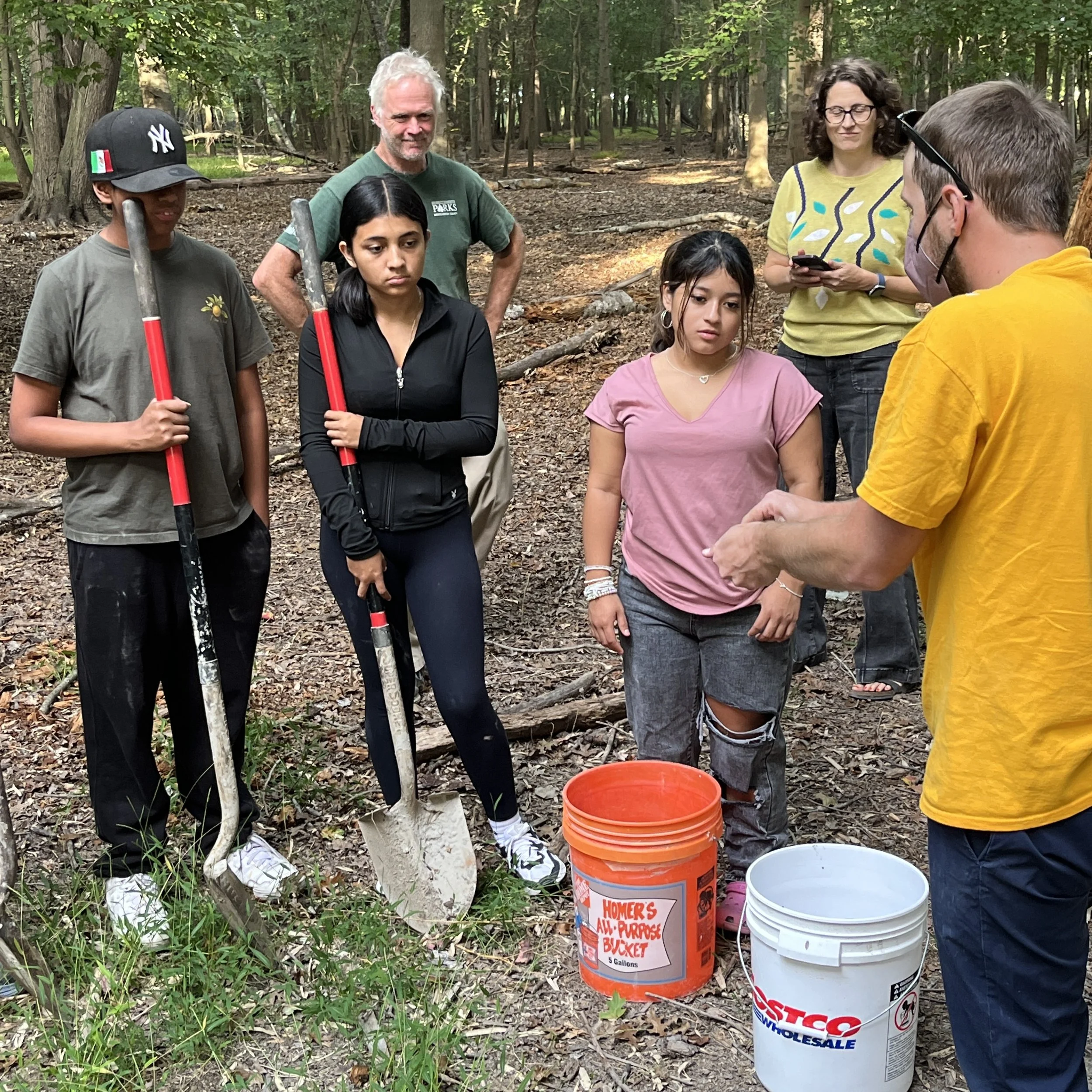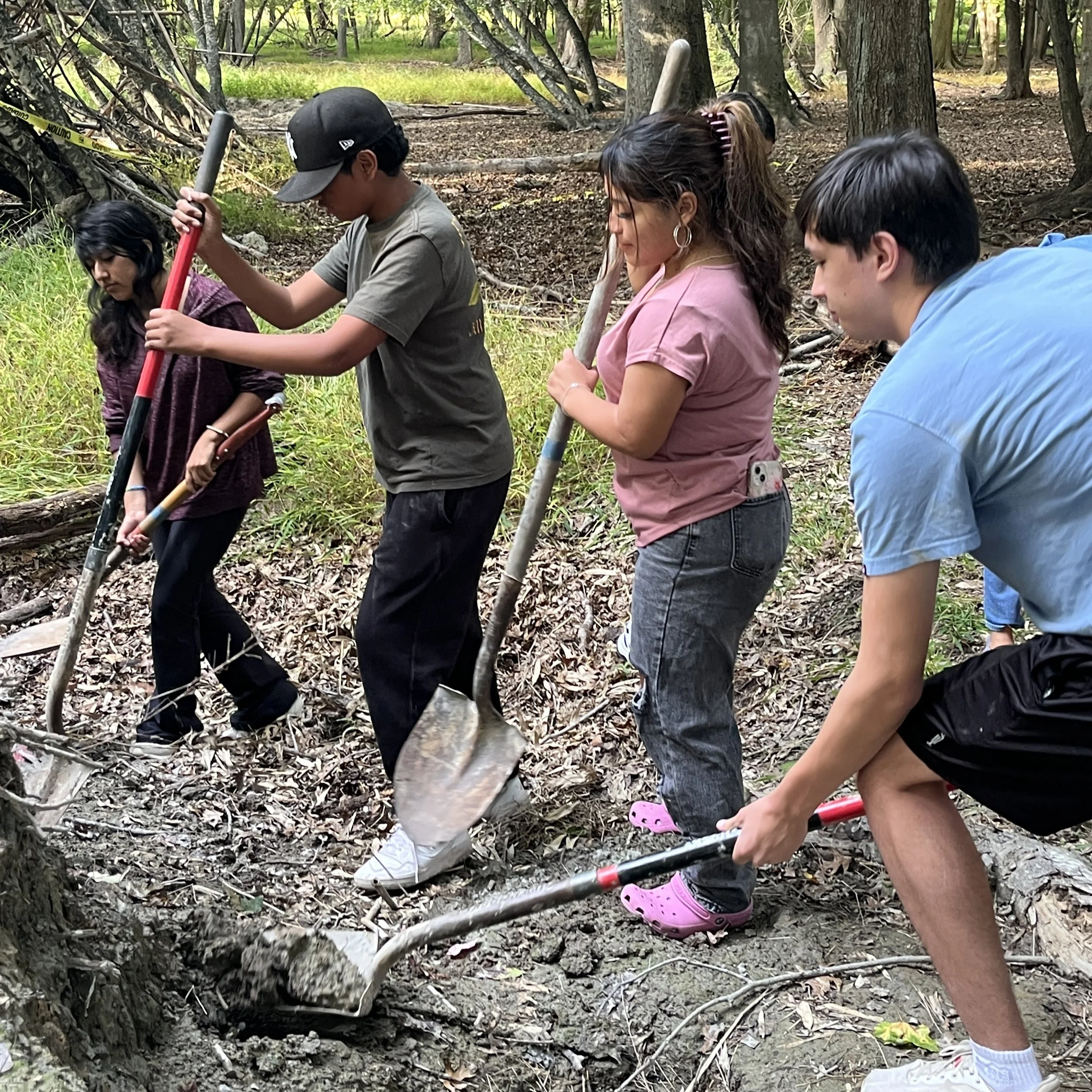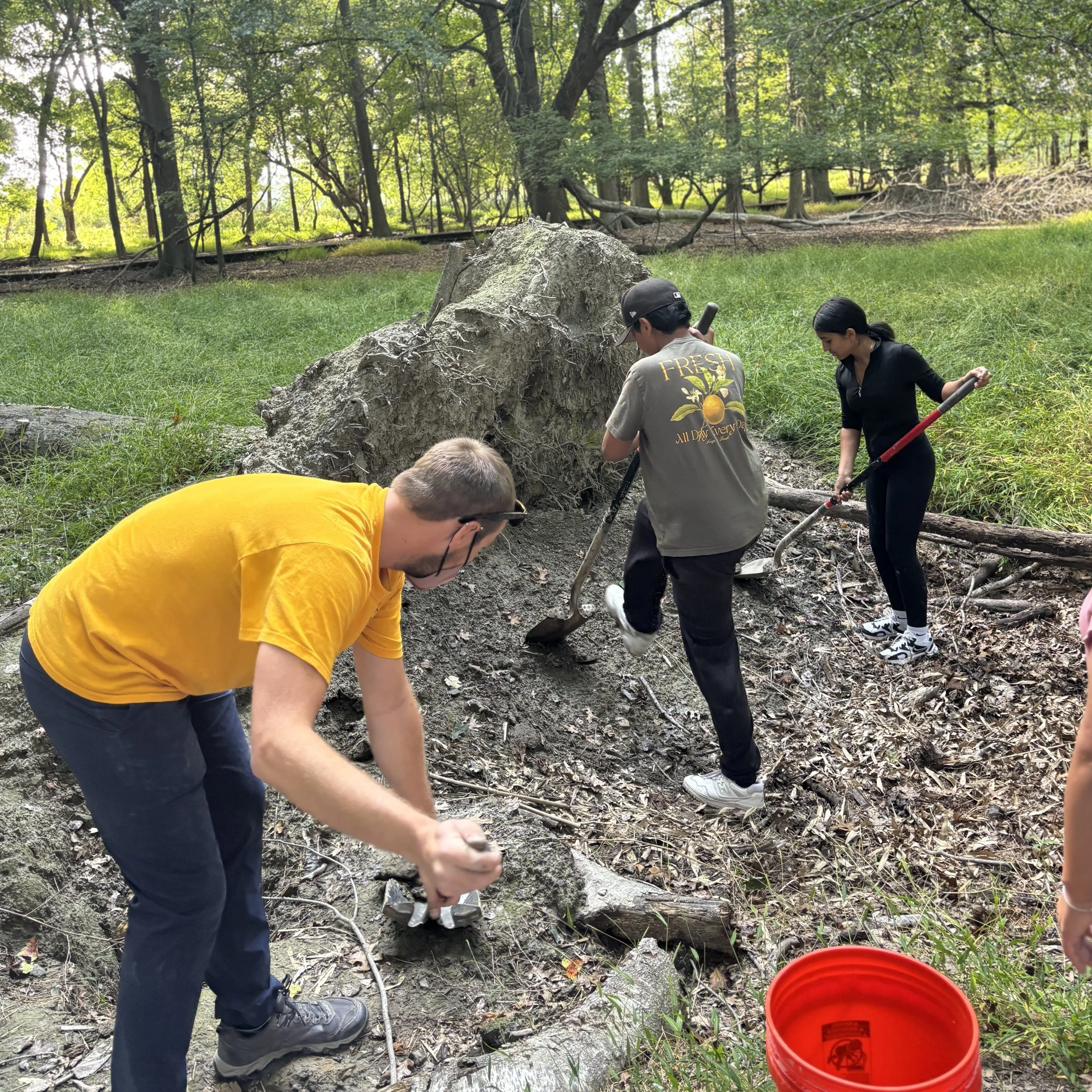Stories from Community Arts | Historias de Artes Comunitarias
The Community Arts team has been hard at work bringing clay to members of our community of all ages. | El equipo de Artes Comunitarias ha estado trabajando duro para traer la arcilla a los miembros de nuestra comunidad.
Here at Clay Art Center, our Community Arts team partners with local organizations to broaden access to clay and arts education in Port Chester, Westchester County, and beyond. For nearly 20 years, Community Arts has offered clay classes to afterschool programs, residents at assisted living facilities, teachers in professional development classes, newly-arrived refugees, and countless others. In the past month, Community Arts ran two Hispanic Heritage Month one-time classes, a new year of Around the World in Clay Classes began, and students in the high school visited the Edith G. Read Wildlife Sanctuary to dig their own wild clay. Read on to learn more about their experiences!
In honor of Hispanic Heritage Month, Clay Art Center hosted two one-time classes for Port Chester families to make projects inspired by ceramic traditions in different Hispanic cultures. These classes were offered for free to the local community thanks to the support of our generous donors. In the first class taught by Alvaro Villa, students sculpted alebrijes, vibrantly colorful and patterned figures that are made up of a combination of different animal parts. These figures were first popularized in Oaxaca, Mexico in the first half of the 20th century, and have since become a significant presence in Mexican folk art and can be found at festivals, exhibitions, and markets across the country. Students in the alebrije class constructed their own figures and used underglaze to decorate their pieces with bright colors.
Students in the second class taught by Susana Valera Read worked with chanchitos de Pomaire as a source of inspiration. Chanchitos de Pomaire are three-legged pigs made in Pomaire, Chile, a small town outside of Santiago that is rich in clay deposits. The pig figures are known as symbols of good luck and abundance, and are often gifted as a sign of friendship. Some students in the class opted to make a chanchitos de Pomaire-inspired molcajete (a footed variety of mortar and pestle), while others made piggy banks or small sculptures.
The new Around the World In Clay term has begun, and students ages 7 to 18 are getting back into the swing of creating with clay. For the two younger classes (ages 7-8 and 9-10), Around the World In Clay is often their first experience working with ceramics. In the first few classes, instructor and Artist-in-Residence Stephanie Perez focuses on teaching students the basics: rolling slabs, making pinch pots, coiling, and scratching and attaching. As students work through their first projects, they’re encouraged to think about smoothing their pieces and creating a canvas for the glaze they’ll eventually apply. Building a foundation of these essential skills allows students to zero in on their own creativity and where it leads them.
Around the World In Clay clay classes draw inspiration from the deep and varied history of ceramics all over the world. Beyond learning to scratch and attach, students also learn about the history and cultural significance of the ceramics that their projects draw from, and get to see the many different shapes that ceramic work can take. For example, one of the first projects of the new term for the younger students has been the Chinese Ding, or a three-legged vessel from ancient China often used to heat food over a fire, like a cauldron. Ding were made out of both ceramic and bronze, and featured varying levels of ornamentation, from repeated geometric patterns to mythical creatures. Many examples of bronze ding are preserved in museum collections today. After learning about the history of ding, Around the World In Clay students made their own three-footed pots inspired by what they had learned, in combination with their own ideas and interests.
Around the World In Clay is funded in part by the Common Sense Fund.
This past week four members of the high school Around the World In Clay class got the unique opportunity to harvest their own clay right next door in Rye, New York. They travelled to the Edith G. Read Natural Park and Wildlife Sanctuary, where the curator, Scott Williamson, spoke to the students about the history of Indigenous people in the area, and how they used oyster shells as a temper for their ceramics (a non-plastic additive used in pottery to prevent shrinkage and cracking during drying and firing). The students then learned about searching for raw clay and testing its plasticity by squeezing it and rolling it into coils. For the rest of their Around the World In Clay term, the high schoolers will be processing and testing the clay, and then using it for handbuilding and wheel-thrown projects. The Community Arts team hopes to be able to complete a raku firing with the students using some of the pieces made from the wild clay.
Aquí en Clay Art Center, nuestro equipo de Artes Comunitarias empareja con organizaciones locales para ampliar el acceso a la arcilla y la educación artística en Port Chester, el condado de Westchester, y más allá. Durante casi 20 años, Artes Comunitarias ha ofrecido clases de arcilla para programas extraescolares, residentes en centros de vida asistida, profesores en clases de desarrollo profesional, refugiados recién llegados, y inúmeros otros. En el último mes, Artes Comunitarias ofreció dos clases únicas para conmemorar el Mes de la Herencia Hispana, comenzó un nuevo año de clases de Around the World in Clay, y los estudiantes en el colegio visitaron Edith G Read Wildlife Sanctuary para cavar su propia arcilla salvaje. Lea más para aprender sobre sus experiencias!
En honor del Mes de la Herencia Hispana, Clay Art Center organizó dos clases únicas para familias de Port Chester para hacer proyectos inspirados en tradiciones cerámicas de culturas hispanas distintas. Estas clases se ofrecieron de forma gratuita a la comunidad local gracias al apoyo de nuestros generosos donantes. En la primera clase, enseñada por Alvaro Villa, los estudiantes esculpieron alebrijes, figuras estampadas y coloridas vibrantes que se componen de una combinación de diferentes partes de animales. Estas figuras se popularizon por primera vez en Oaxaca, México, en la primera mitad del siglo XX, y desde entonces se han convertido en una presencia significativa en el arte popular mexicano y se pueden encontrar en festivales, exposiciones y mercados de todo el país. Los estudiantes en la clase de alebrijes construyeron sus propias figuras y usaron sub esmalte para decorar sus piezas con colores vibrantes.
Los estudiantes en la segunda clase, enseñada por Susana Valera Read, trabajaron con chanchitos de Pomaire como fuente de inspiración. Los chanchitos de Pomaire son puercos de tres piernas hechos en Pomaire, Chile, un pueblito a las afueras de Santiago que es rico en depósitos de arcilla. Las figuras porcinas son conocidas como símbolos de buena suerte y abundancia, y a menudo se regalan como señal de amistad. Algunos estudiantes en la clase optaron a hacer un molcajete inspirado en los chanchitos de Pomaire, mientras otros hicieron huchas o esculturas pequeñas.
El nuevo término de Around the World in Clay ha comenzado, y los estudiantes de 7-18 años están volviendo a la rutina de crear con arcilla. Para las clases más jóvenes (de 7-8 y 9-10 años), Around the World in Clay es normalmente su primera experiencia trabajando con cerámica. En las primeras clases, la instructora y artista en residencia, Stephanie Perez, se enfoca en enseñar los básicos a los estudiantes: laminar losas, hacer ollas de pizca, enrollar rollos, y raspar y unir. A medida que los estudiantes trabajan en sus primeros proyectos, se les anima a pensar en alisar sus piezas y crear un lienzo para el esmalte que finalmente aplicarán. Desarrollar una base de estas habilidades esenciales les permite centrarse en su propia creatividad y adónde los lleva.
Las clases de Around the World in Clay se inspiran en la profunda y variada historia de cerámica de todo el mundo. Además de aprender a rascar y unir, los estudiantes también aprenden sobre la historia y el significado cultural de la cerámica de la que se nutren sus proyectos y pueden ver las diferentes formas que puede adoptar el trabajo en cerámica. Por ejemplo, uno de los primeros proyectos del nuevo término para los estudiantes más jóvenes ha sido el Ding chino, o una vasija de tres pies de un recipiente de tres patas de la antigua China que a menudo se utilizaba para calentar alimentos sobre el fuego, como un caldero. Los dings se construyeron de cerámica y de bronce, y presentaban distintos niveles de ornamentación, desde patrones geométricos repetidos hasta criaturas míticas. Hoy en día, muchos ejemplos de dings bronces se preservan en colecciones de museos. Después de aprender sobre la historia de dings, los estudiantes de Around the World in Clay hicieron sus propias vasijas de tres pies inspiradas en lo que habían aprendido, en combinación son sus ideas e intereses.
Around the World in Clay está financiado en parte por el Common Sense Fund.
Esta semana pasada, cuatro estudiantes de colegio de la clase de Around the World in Clay tenían la oportunidad única de recolectar su propia arcilla justo al lado en Rye, NY. Viajaron al Edith G. Read Natural Park and Wildlife Sanctuary, donde el curador, Scott Williamson, habló con los estudiantes sobre la historia de pueblos indígenas en el área y como usaron conchas de ostras como desgrasante para sus cerámicas (un aditivo no plástico utilizado en cerámica para evitar la contracción y el agrietamiento durante el secado y la cocción). Luego los estudiantes aprendieron sobre buscar la arcilla salvaje y probar su plasticidad por estrujarla y enrollarla en rollos. Para el resto del término de Around the World in Clay, los estudiantes del colegio procesarán y probarán la arcilla, para luego usarla para proyectos torneados y de construcción a mano.
